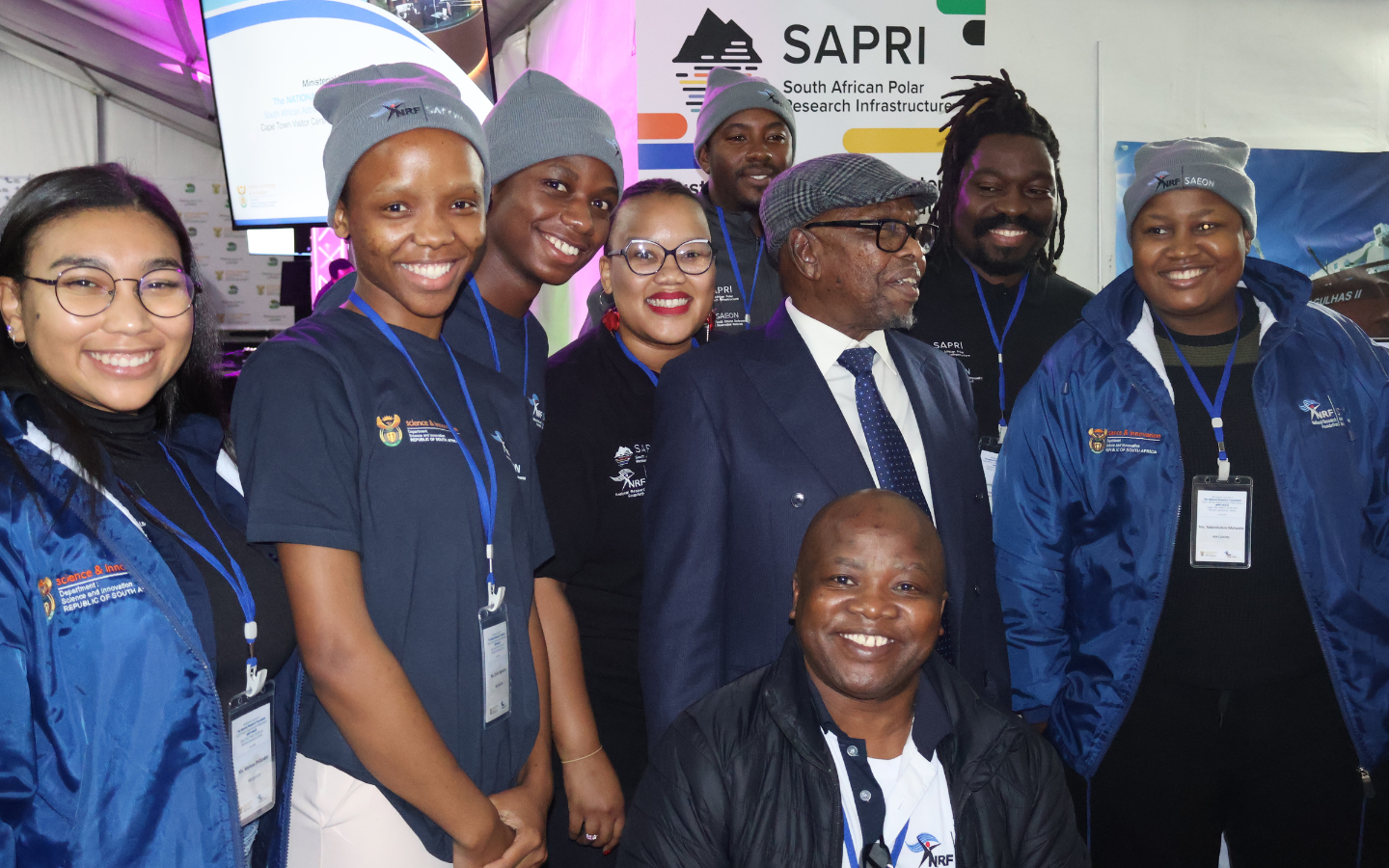The South African Polar Research Infrastructure (SAPRI) was invited to exhibit at the Ministerial Launch of the National Research Foundation’s South African Astronomical Observatory (NRF-SAAO)’s Remote Operations and Visitor Centres on 9 July 2025 in Cape Town, South Africa.
The launch of these facilities forms part of the outreach programme of the Department of Science, Technology and Innovation’s (DSTI) 2025/26 Budget Vote Debate, which was tabled earlier that day in Parliament. The two flagship infrastructure developments were unveiled by Honourable Minister, Prof Blade Nzimande, joined by his Deputy, Dr Nomalungelo Gina; Minister of Tourism, Ms Patricia de Lille; and NRF CEO, Dr Fulufhelo Nelwamondo.

Opening ceremony of the NRF-SAAON Remote Operations and Visitors Centres by (L-R) Minister of Tourism, Ms Patricia de Lille, Minister of DSTI, Prof Blade Nzimande, and DSTI Deputy Minister, Dr Nomalungelo Gina.
The launch was attended by over 120 learners – primarily from disadvantaged schools – alongside various dignitaries. The event featured a variety of engaging activities, including learner-focused sessions, astronomy-themed celebrations, storytelling, and stargazing. SAPRI brought the marine and polar worlds a little closer, giving learners and dignitaries alike an immersive glimpse into Antarctic and sub-Antarctic environments.
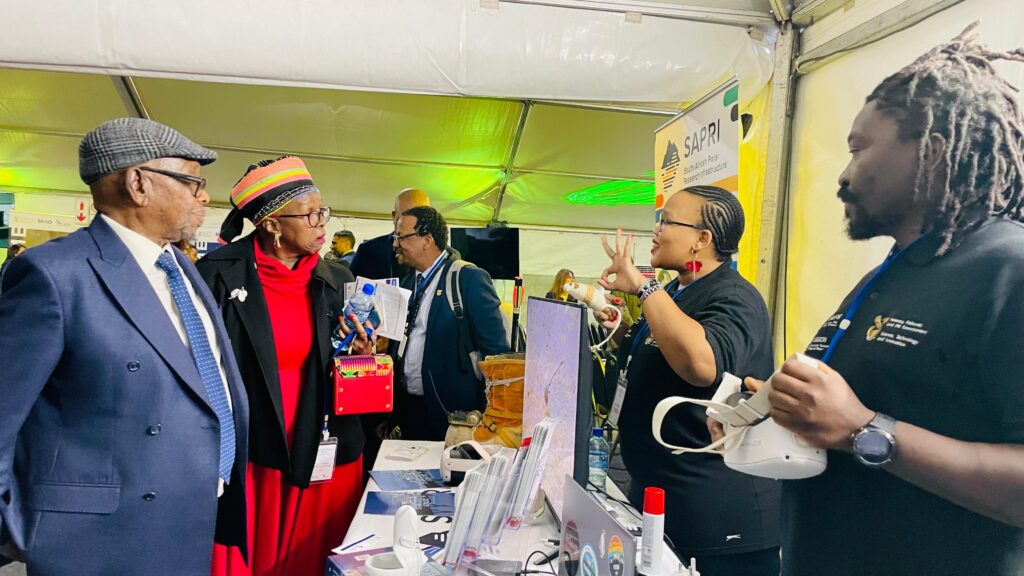
Kelly and Yinhla engaging the DSTI dignitaries including the Honourable Minister during the NRF-SAAO remote centres launch
Using virtual reality (VR) headsets, learners explored the icy landscapes, encountered elephant seals and penguins, and experienced what it’s like to work in one of the most remote regions on Earth – all without leaving the room. Even the Minister of DSTI and his dignitaries joined in the experience. “We brought Marion Island to Cape Town,” said Kelebogile Mogotsi – Kelly, SAPRI’s Engagement Officer.
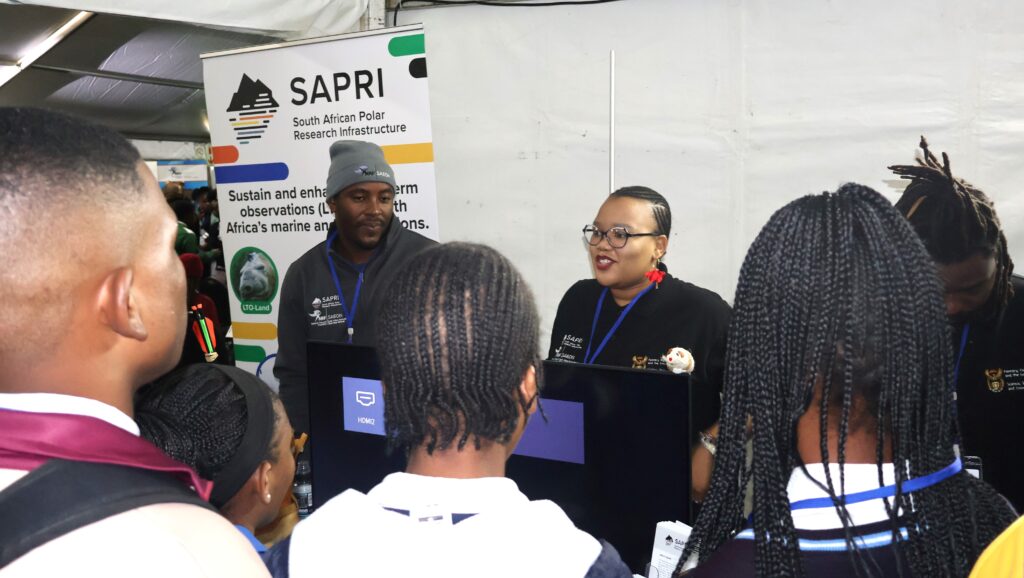
The SAPRI team, Kelly and Tlhonolofatso Steve engaging learners during the launch
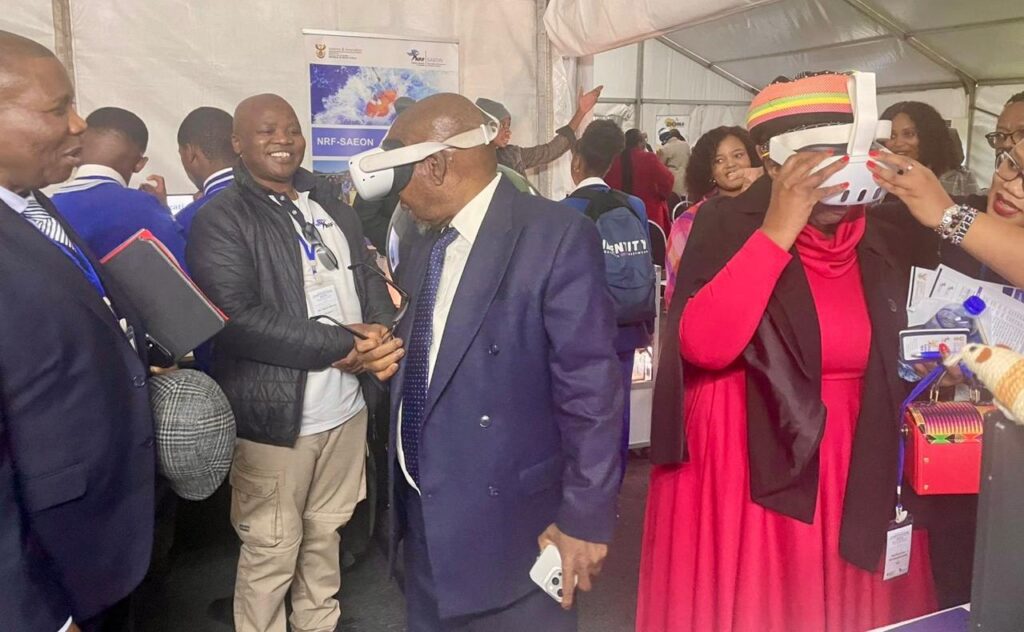
The DSTI Minister tries on the VR Headsets to experience the remote locations SAPRI operates in.
SAPRI was also joined by the National Research Foundation’s South African Environmental Observation Network (NRF-SAEON). Several NRF-SAEON Nodes supported and exhibited at the launch, including the marine offshore node which also hosts SAPRI – the Egagasini Node, the Expanded Freshwater and Terrestrial Environmental Observation Network (EFTEON), and the data and information node, known as the Ulwazi Node. The Egagasini Node was further represented by its flagship project, Ocean20 South Africa (O20SA), an engagement group part of the G20 South African Presidency. Together, the NRF-SAEON team collaborated to engage and captivate the audience.
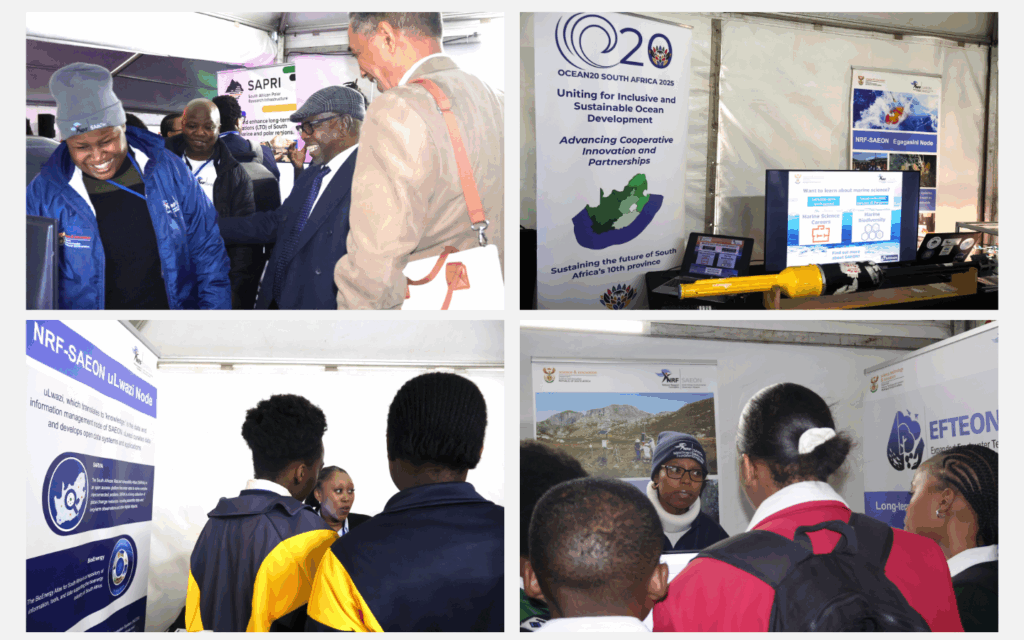
The NRF-SAEON Nodes, Research Infrastructures and Ocean20 South Africa at the NRF-SAAO remote centres launch.
Science With a Personal Touch
What truly brought SAPRI’s exhibit to life was the personal connection shared by the team. Learners were excited to discover that all three SAPRI representatives including Kelly, Tlhonolofatso Steve Tebele, and Yinhla Shihlomule, had overwintered on Marion Island – spending over a year in the remote location as part of the South African National Antarctic Programme (SANAP). Tlhonolofatso also spent a year at South Africa’s research station, SANAE IV, in Antarctica, a story brought to life by the display of the iconic heavy ‘pumpkin boots,’ which drew much attention.
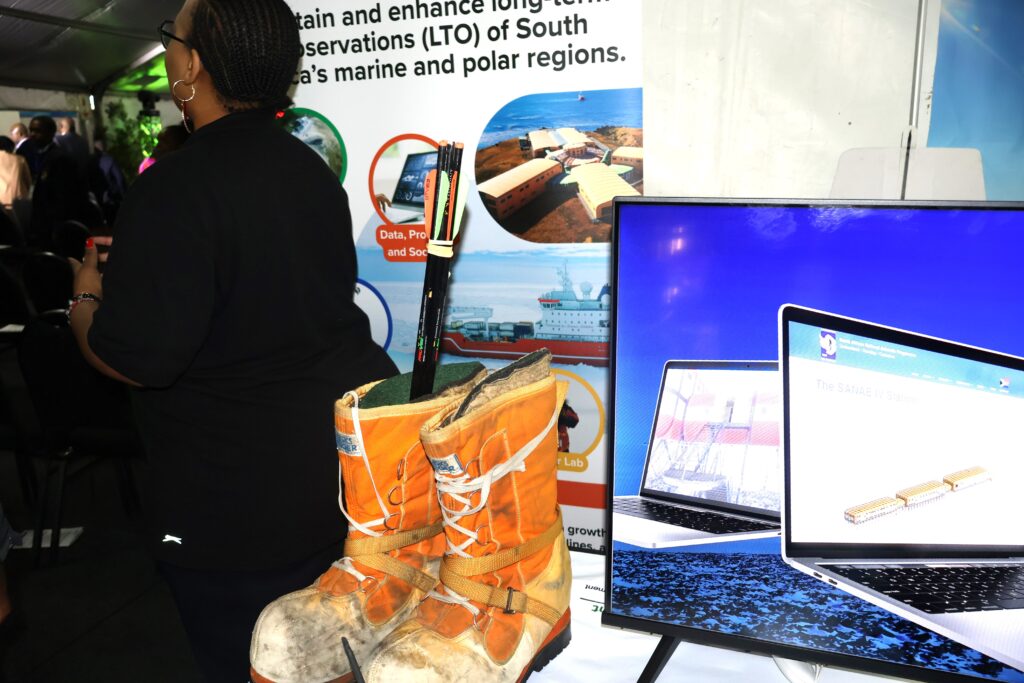
The iconic ‘pumpkin boots’ worn as PPE by overwintering personnel at SANAEI IV in Antarctica
“They were so curious to know how we survived the harsh conditions,” Kelly shared. “We told them about the isolation, the cold, the wind… and of course, we showed them our pumpkin boots – those iconic orange boots every overwinterer who’s been to SANAE knows!” “Suddenly, it wasn’t just a story anymore – it became real,” she continued. “You could see their imaginations running wild, thinking, ‘Could I do that too one day?’ And that’s exactly the kind of spark we hope to ignite.”
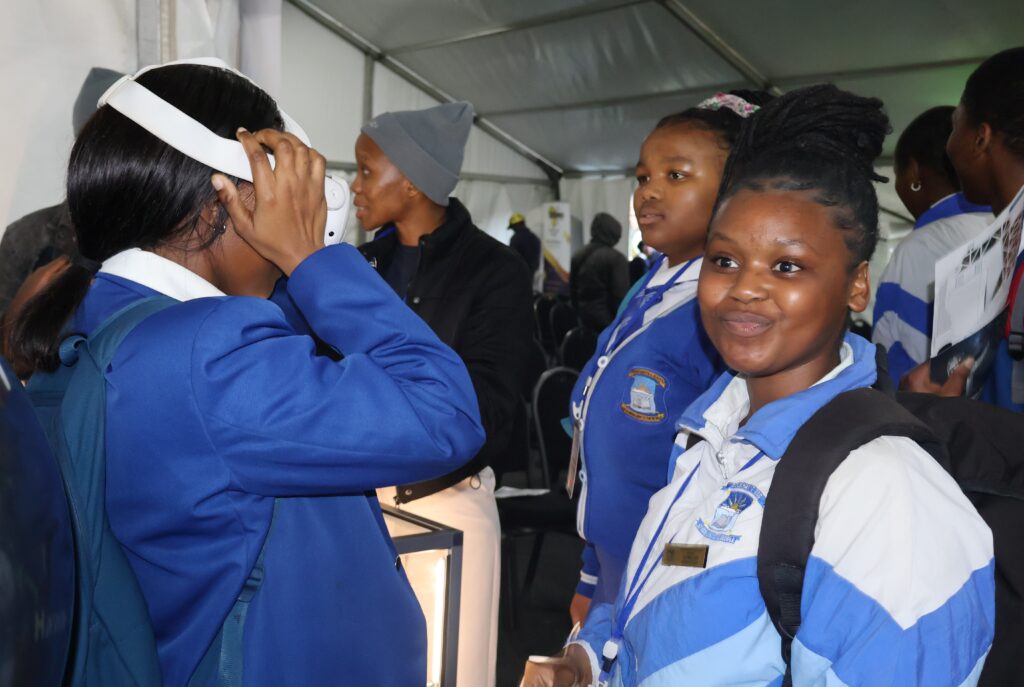
SAPRI giving learners the virtual experience of being on Marion Island.
Speaking Science in a Language Everyone Understands
Kelly also represented the research infrastructure in a national interview on Radio 2000, highlighting the importance of South Africa’s polar research, youth involvement, and the country’s unique position as the only African nation working in Antarctica. When asked about the impact of the exhibit on young people, Kelly acknowledged how overwhelming science can sometimes feel, emphasising that engagements like these are crucial for connecting with and inspiring the youth.

Kelly being interviewed by Radio 2000 during the NRF-SAAO remote centres launch.
During the interview, Kelly also spoke about the diverse opportunities available for young people in the marine and polar research space – ranging from science and engineering to technical and maritime careers. She further shared SAPRI’s ongoing efforts to bridge the gap between science and everyday South Africans through community outreach and active communication via social media, helping to make science more accessible and relatable.
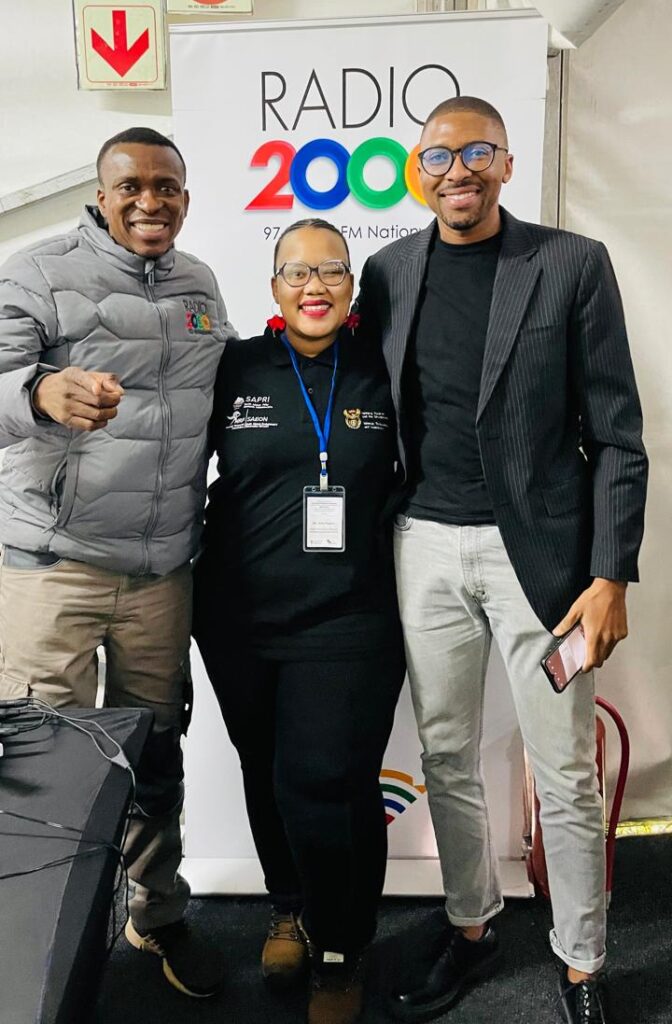
Kelly with (L) the Radio 2000 host, David Mashabela and (R) NRF-SAAO Astronomer, Itumeleng Monageng.
Inspiring a Future Generation
From VR to pumpkin boots, from elephant seals to Argo floats, and from radio waves to personal stories, SAPRI’s presence at the NRF–SAAO launch of the Remote Operations and Visitor Centres brought science closer to home, especially for the youth. We want learners to see themselves in this space. Science isn’t distant. It’s here. It’s ours. And it begins with curiosity.
A heartfelt thank you to the NRF–SAAO for inviting us to be part of such a momentous event, dedicated to expanding public outreach and science communication. The Remote Centres provide an accessible and engaging space for educational programmes that demystify astronomy and inspire a new generation of scientists. You can learn more in the article ‘DSTI Launches Remote Operations and Visitors Centres at NRF–SAAO’
Text supplied by Kelebogile Mogotsi – Kelly, Tlhonolofatso Steve Tebele & Yinhla Shihlomule (SAPRI)
Rabia Mathakutha, South African Polar Research Infrastructure, 25 July 2025
